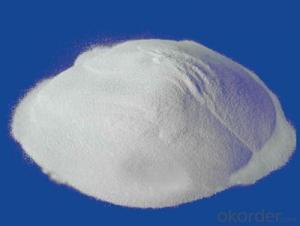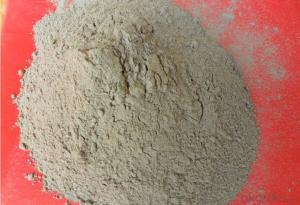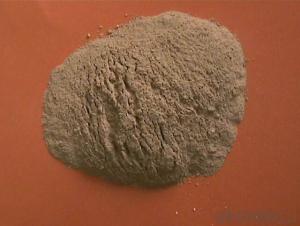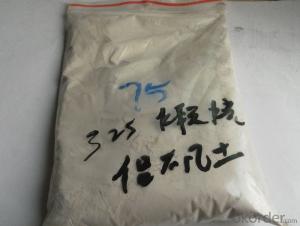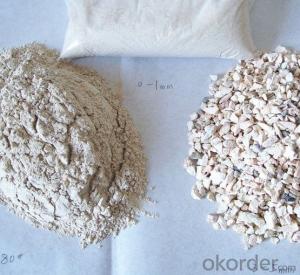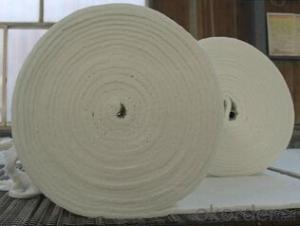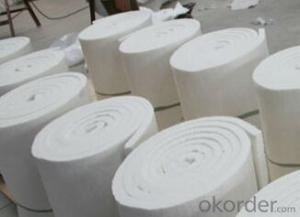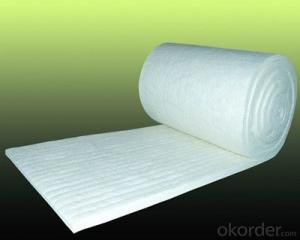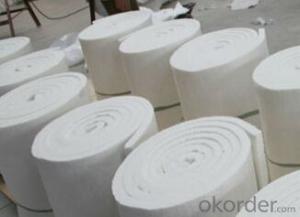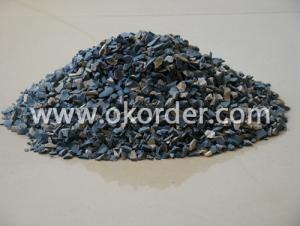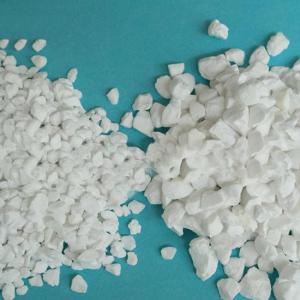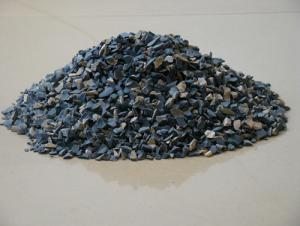Raw Materials for Refractory - Ceramic Fiber Blanket CMAX
- Loading Port:
- China Main Port
- Payment Terms:
- TT OR LC
- Min Order Qty:
- -
- Supply Capability:
- -
OKorder Service Pledge
OKorder Financial Service
You Might Also Like
Specifications
Ceramic Fiber Blanket is a great energy saving product because of its superior insulating properties and advantages of low heat storage and complete resistance to thermal shock. It is widely used as industrial insulation, high temperature insulation and in a variety of heat processing applications. Ceramic fiber blanket is produced from high strength spun ceramic fibers and is needled to provide exceptional handling or construction strength. KT Refractories stocks large amounts of High quality Ceramic Fiber Blanket in Houston TX: 2300°F or 2600°F Ceramic Fiber Blanket with different width or densities, or thickness. Related Ceramic Fiber Blanket products are also available: ceramic fiber Strips, ceramic fiber modules, ceramic fiber paper, ceramic fiber bulk,ceramic fiber textiles, and ceramic fiber board etc.
New! Ceramic Fiber Strip in stock -- 2300°F 8# 1" thick, 4" or 6" wide Ceramic Fiber Strips in 300" length. Ceramic Fiber Strips are packed in a box of 6 or 4 respectively and they are cut out of Ceramic Fiber Blanket. Ceramic Fiber Strips are soft and commonly used as gasket material.Ceramic Fiber Strip are cut off from Ceramic Fiber Blanket, therefor it has all the insulating advantages and excellert features of ceramic fiber blanket.
Ceramic Fiber Blanket's excellent features and typical applications of Ceramic Fiber Blanket are:
Excellent chemical corrosion-resistant performance without being influenced by oil and water
Excellent construction and tensile strength
Contains no bonding agent, great white color and flat even surface, easy to cut
Very low shrinkage
Ceramic Fiber Blanket for REFINING and PETROCHEMICAL
Reformer and pyrolysis lining
Tube seals, gaskets and expansion joints
High temperature pipe, duct and turbine insulation
Crude oil heater linings
Heat treating and annealing furnaces
Furnace door linings and seals
Soaking pit covers and seals
Furnace hot face repairs
Reheating furnace and ladle covers
Boiler insulation and boiler doors
Reusable turbine covers
Expansion seals/pipe coverings
Kiln car insulation and seals
Continuous and batch kilns
Insulation of commercial dryers and ovens
Veneer over existing refractory
Stress relieving insulation and fire protection
Glass furnace crown insulation
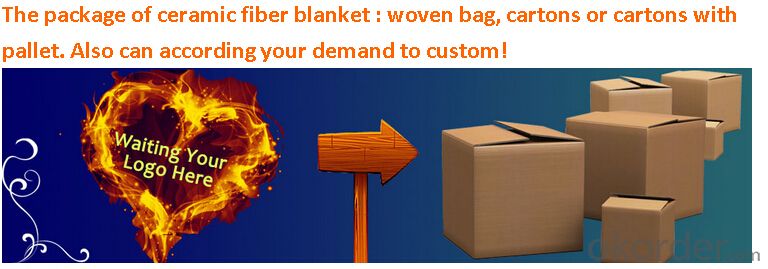

- Q: What are some of the new refractories and what are their characteristics?
- Alumina, a better refractory material, is a new type of ceramic refractory, the characteristics are unclear.
- Q: What's the difference between refractory metal raceway and fireproof raceway?
- Hello, I'm very glad to answer your question. As far as I know, anti-fire groove box is made by the polymerization reaction of high polymer material and halogen-free flame retardant polymeric material. It possesses excellent mechanical properties and environmental protection property, nice appearance, and diversified colors. As a kind of fully enclosed cable bridge, it is applicable for communication signals, and laying of computer cables and control cables of highly sensitive systems. When used in heavy corrosive environment and outdoor dust environment, it has good protective effect on cables. It boasts many advantages of fire retardance (fire resistance rating is above B grade), corrosion resistance, anti-aging, high strength, light weight, and easy installation. Hope my answer is helpful for you. Hope my answer can be accepted.
- Q: What are the specifications of fire resistant bag?
- Currently there are four specifications: C10, C40, B40 and B50 suitable for steel ladle of less than 60 tons. I hope it can help you.
- Q: What refractories are used in various parts of the blast furnace.
- Blast furnace from top to bottom has the throat, hearth staves, waist, bosh, hearth and furnace bottom. the specific structure is as follows: The throat is the first to be affected by the impact and abrasion, generally use high-density alumina bricks. the upper and central portion of temperature furnace is only 400 ~ 800 ℃, the area with high alumina bricks and silicate bricks. The lower part of furnace is subject to erosion and dust erosion alkali metal vapor due to high temperatures, it is required in such case to use high quality clay brick,high alumina brick,carborundum brick,corundum brick that is slag resistance and alkali?resistance, temperature resustant and wearproof. Furnace bosh temperature reached 1400 ~ 1600 ℃, serverly eroded by slag,vapor, flush. so we use carborundum brick and reaction-bonded silicon?carbide?brick. Bosh temperature reaching1600 ~ 1650 ℃, using alumina brick, corundum brick or silicon carbide brick. the temperature of Hearth near the upper portion of the outlet zone at 1700 ~ 2000 ℃, use of silicate bricks and corundum castable graphite filler, silicon carbide bricks. In 1450 Silly twitch bottom temperature sealing die of hunger slander bet phoenix astringent preserved Grade ~ 1500 ℃, use of graphite bricks and microporous carbon bricks, now use more corundum brick, corundum mullite brick and synthetic mullite brick. x26lt;P class x3d "share-btn"x26gt;
- Q: Who knows how many kinds of fireproof insulation materials are there in the market?
- The so-called A-level materials in fire insulation materials, namely, the WW non-combustible insulation materials, and the WW material s are A-level. Inorganic fireproof and thermal insulation materials can be used as wall insulation materials to replace red bricks, therefore, they, as thermal and cold insulation materials, can reduce the thickness of walls, and save energy, as well as expand applicable areas indirectly, decreased structure weight. They are very good.
- Q: What is refractory aggregate?
- It includes two categories: coarse aggregate and fine aggregate.
- Q: What are the application of old refractory bricks?
- It can still be used as refractory bricks or refractory. The quality of auxiliary material is not as good as bauxite.
- Q: How to choose construction external wall thermal insulation and fireproofing materials?
- Now external wall insulation decoration one board is more popular thermal insulation material. Low-carbon energy-saving insulation decoration board combine two constructions (decoration, insulation) into one, saving nearly ten processes,and construction period. Compared with conventional thermal insulation methods, it can increase construction efficiency one time by shortening 60% of the construction period. It integrates low carbon, energy conservation, decoration, fireproof and building aesthetic effect by combining like-dissolving-like binding system installation and bump fixed system, and under long-term cooperation of air handling system and waterproof system. It has excellent outdoor weather resistance, colour?retention, alkali?resistance, water resistance, scrubbing resistance, crack resistance and temperature change resistance, wear resistance, collion resistance and the paint film is firm and durable, with strong adhesive force and mould proof effect. It can provide all-dimensional thermal insulation, decoration, low carbon and energy conservation and fire prevention for construction projects.
- Q: can slag tailings be used to be the base materials of refractory materials ?
- the rest of it can be used as refractory additives. the scale currently used clay bricks to make high-temperature liquid. It is easy to produce large amounts of liquid because of the high iron content, instead of its refractoriness. But it can be used as refractory minaralizer.
- Q: What is fire retardant coating mainly used for?
- Fire retardant coating is a coating which is applied to the surface of buildings and structures and can form a protective layer of fire retardancy and thermal insulation. It can reduce the flammability of the coated materials and block the rapid spread of fire so as to improve fire endurance of the coated materials. Features of fire retardant coating: (1) Fire retardant coating itself has a flame-retardancy or non-inflammability, and it can prevent the protected substrate from direct contact with the air, and delay ignition and reduce the burning speed of the objects. (2) In addition to flame retardancy or non-inflammability, the fire retardant coating itself has a a low thermal conductivity, which can delay the transfer of flame temperature to the substrate to be protected. (3) When heating, fire retardant coating decomposes non-combustible inert gas to dilute the combustible gas decomposed by the protected, making it difficult to burn or slow down the burning rate. (4) Fire retardant coating containing nitrogen will decomposite NO, NH3 and other basic groups, which compound with the organic radicals and interrupt the chain reaction so as to reduce the temperature. (5) intumescent fire retardant coating will expand and foam when heating, and form a carbon foam insulation to block the protected objects, thus delaying the transmission of heat to the substrate.
Send your message to us
Raw Materials for Refractory - Ceramic Fiber Blanket CMAX
- Loading Port:
- China Main Port
- Payment Terms:
- TT OR LC
- Min Order Qty:
- -
- Supply Capability:
- -
OKorder Service Pledge
OKorder Financial Service
Similar products
Hot products
Hot Searches
Related keywords






